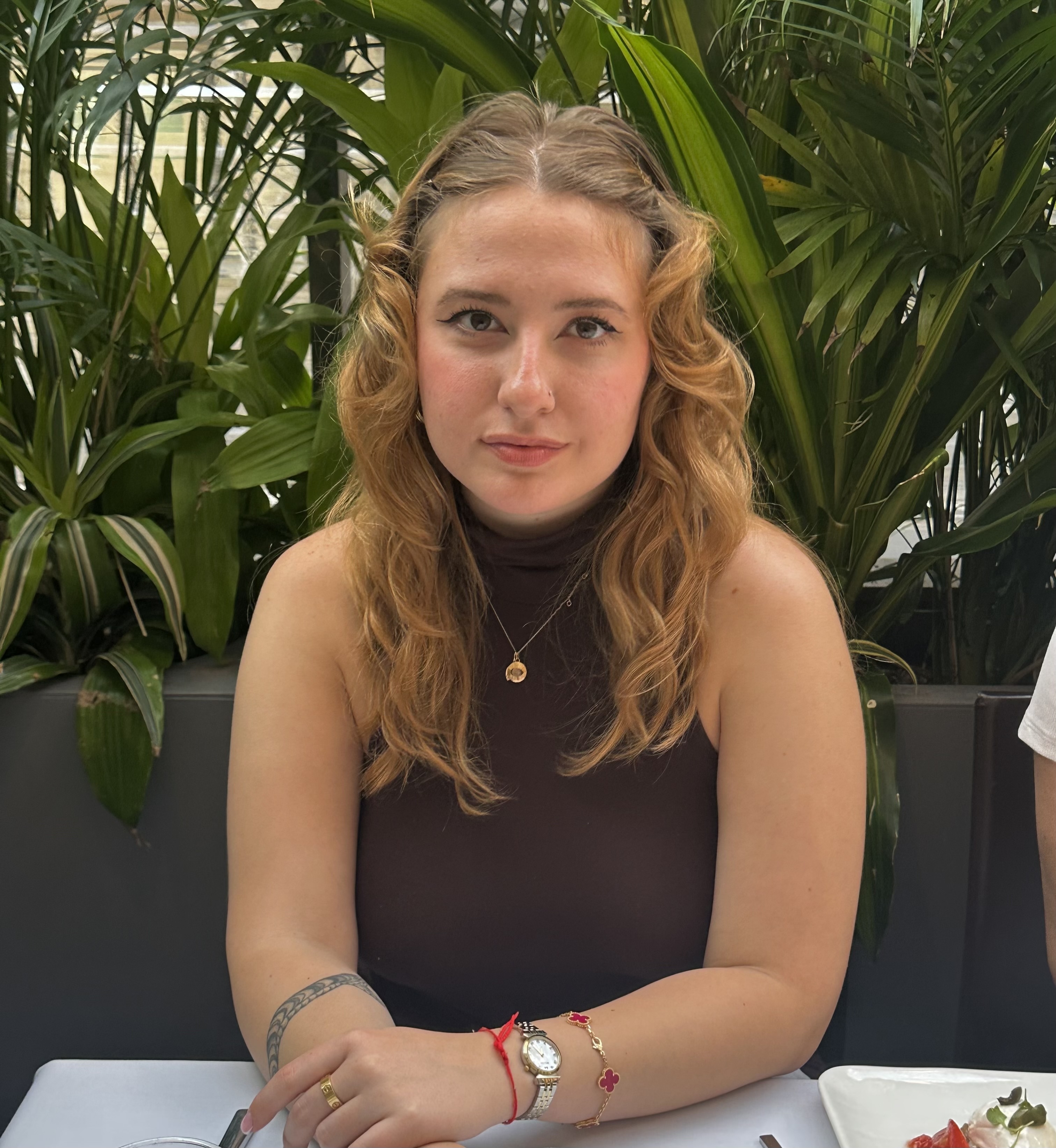Katrin Shelkov, FCLC 2024

MAJOR: Psychology, pre-med
BIO: Katrin Shelkov (she/her) completed her bachelor of science degree in psychology through a pre-med track from Fordham University. In the fall, she will attend a Doctor of Pharmacy program focusing on clinical pharmacy at Northeastern University. Besides working in the laboratory setting, Katrin rehabilitates and rehomes animals. She also has experience working as a medical assistant in an ophthalmology office. Katrin enjoys painting, reading books, and running with her dog in her free time. She
PROJECT TITLE: A Potential Electrophilic Aromatic Substitution Route to Highly Functionalized Aromatic Rings: An Approach toward the A-Ring of Pancratistatin.
MENTOR: Dr. Martin Di Grandi, Department of Natural Sciences
ABSTRACT: The Mary Hamilton Research Fund allowed the research of synthesizing a portion of the anti-cancer natural product, also known as pancratistatin, to be conducted. This natural product's highly substituted, heavily oxygenated aromatic A-ring distinguishes itself through a unique synthetic challenge (due to its flat characteristic). Nonetheless, the research involved attempts to discover new tactics that differ from relying on organometallic chemistry for its preparation. To be more specific, the study explored numerous electrophilic conditions to prepare the highly functionalized aromatic benzylamines, which would aid in the total synthesis of the desired natural product. Upon preparation of isatin-like compounds, the alpha-ketoester bond was to be cleaved through oxidative tactics. Despite testing numerous conditions, the ester wasn't able to be obtained. Due to its unstable nature, the reactions provided 2-hydroxybenzoic acids without allowing the isolation of the desired mixed anhydride. Working out the chemistry, the conditions were thought to have been generally successful; however, the desired intermediate is presumed too reactive to be isolated. Future plans of the research experiment will explore alternative conditions to make this isolation process possible, ultimately leading to a new synthesis in obtaining the A-ring of pancratistatin. The Mary Hamilton Research Fund allowed the research of synthesizing a portion of the anti-cancer natural product, also known as pancratistatin, to be conducted. This natural product's highly substituted, heavily oxygenated aromatic A-ring distinguishes itself through a unique synthetic challenge (due to its flat characteristic). Nonetheless, the research involved attempts to discover new tactics that differ from relying on organometallic chemistry for its preparation. To be more specific, the study explored numerous electrophilic conditions to prepare the highly functionalized aromatic benzylamines, which would aid in the total synthesis of the desired natural product. Upon preparation of isatin-like compounds, the alpha-ketoester bond was to be cleaved through oxidative tactics. Despite testing numerous conditions, the ester wasn't able to be obtained. Due to its unstable nature, the reactions provided 2-hydroxybenzoic acids without allowing the isolation of the desired mixed anhydride. Working out the chemistry, the conditions were thought to have been generally successful; however, the desired intermediate is presumed too reactive to be isolated. Future plans of the research experiment will explore alternative conditions to make this isolation process possible, ultimately leading to a new synthesis in obtaining the A-ring of pancratistatin.